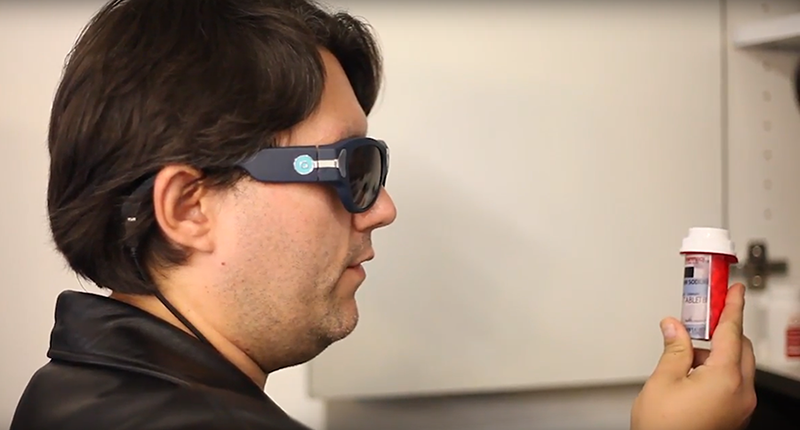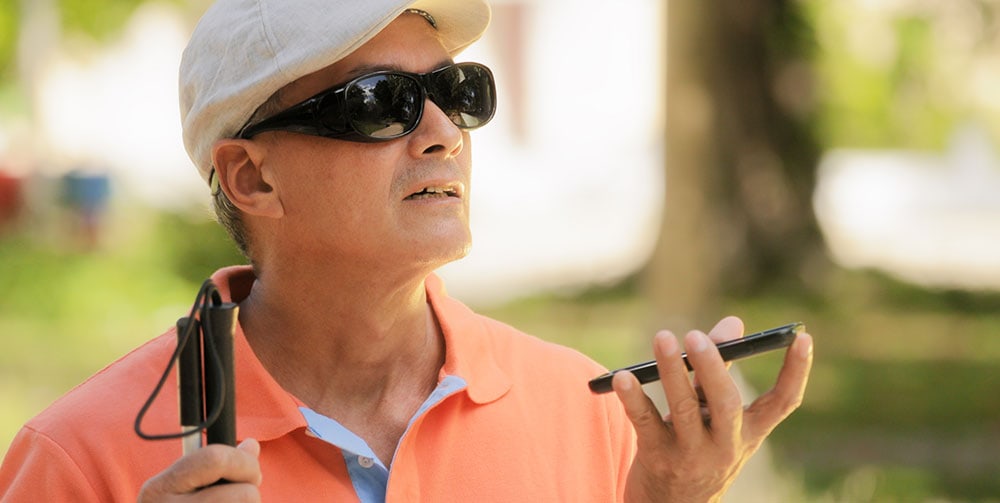OCR Devices for the Blind: Turning Print to Speech in Real-Time
OCR Devices for the Blind: Turning Print to Speech in Real-Time
Blog Article
Enhancing Lives With Advanced Assistive Instruments for the Blind
The assimilation of advanced assistive tools for the blind is changing just how people experience their surroundings and interact with their communities. What does this evolution indicate for the future of assistive innovation and its duty in equipping people?
Summary of Assistive Devices
Assistive gadgets for the blind encompass a diverse series of tools and technologies designed to boost freedom and enhance the lifestyle for people with aesthetic impairments. These devices cater to various demands, from navigating and wheelchair to communication and everyday task monitoring.
Among the primary classifications of assistive gadgets consists of wheelchair aids, such as white walking canes and guide pet dogs, which aid customers browse their surroundings securely. Digital travel aids, outfitted with sensors and audio feedback, also play a considerable duty in flexibility enhancement.
Additionally, gadgets that aid with day-to-day living tasks, such as adaptive cooking area tools, Braille tags, and speaking watches, encourage people to carry out jobs independently. Communication help, consisting of screen viewers and Braille screens, assist in access to info and make it possible for individuals to involve properly with the digital globe.
Furthermore, low-tech solutions like amplifying glasses and large-print materials continue to be vital for numerous individuals. Jointly, these assistive gadgets offer not only as practical tools but additionally as essential enablers of freedom, promoting higher involvement in a world that usually prioritizes sighted experiences. Their combination right into day-to-day life is crucial for promoting inclusivity and enhancing overall wellness for those with aesthetic problems.
Innovative Technologies in operation
Technology in modern technology has considerably transformed the landscape of tools available for people with aesthetic problems. Among one of the most remarkable advancements are wise glasses integrated with enhanced truth, which supply real-time navigation assistance and object recognition. These gadgets leverage progressed video cameras and expert system to provide acoustic signs, improving the user's spatial awareness and autonomy.
In addition, mobile applications have become effective sources, enabling users to recognize currency, reviewed message aloud, and browse unfamiliar settings via verbal instructions. Devices such as Braille displays and refreshable Braille tools remain to progress, providing smooth connectivity with computer systems and mobile phones, thereby improving communication and access to info.
Wearable modern technology, including smartwatches equipped with voice-activated functions, even more encourages users by helping with fast access to notifications and informs without needing aesthetic interaction. Responsive maps and 3D printing are additionally obtaining grip, offering concrete depictions of spaces that aid in positioning and wheelchair training.
Collectively, these cutting-edge modern technologies not just improve the everyday lives of aesthetically impaired people but likewise foster greater freedom, inclusivity, and involvement with the more comprehensive neighborhood, thus reshaping assumptions of accessibility. (AI-powered visual aids)
Personal Stories of Empowerment
Empowerment typically arises from personal experiences that highlight the transformative influence of modern technology on people with visual disabilities. Take, for circumstances, the tale of Sarah, a young musician who restored her interest for paint with using a wise walking cane geared up with barrier detection. This device not only promoted her mobility but instilled a newly found confidence, permitting her to browse public rooms independently and pursue her creative undertakings.

These narratives emphasize the extensive impacts that progressed assistive gadgets can carry every day life. By allowing people to get rid of barriers, modern technology fosters a sense of freedom and self-respect. Such empowerment tales act as a testament to the capacity of technology, illustrating exactly how the i exam near me right tools can dramatically enhance quality of life and open doors to brand-new opportunities for those with visual disabilities.
Advantages of Advanced Solutions
The assimilation of cutting-edge modern technology into assistive tools significantly transforms daily experiences for those affected by vision loss. Assistive technology for the blind. Gadgets such as clever walking canes geared up with sensors, navigation applications, and wearable innovation are designed to supply real-time responses, improving spatial understanding and reducing the dangers connected with wheelchair.
Moreover, progressed assistive technologies promote social incorporation by promoting interaction and interaction. Voice-activated tools and applications permit individuals to access details and involve with their surroundings separately, damaging obstacles that previously hindered their engagement in instructional, expert, and social settings.
In enhancement, the customization and versatility of these solutions deal with the diverse demands of customers, consequently boosting their total high quality of life. Boosted functionality, such as things acknowledgment and text-to-speech capacities, empowers people with aesthetic disabilities to perform tasks that anti glare blue light glasses they may have when discovered testing. Inevitably, progressed assistive technologies not only enhance self-reliance and safety yet additionally promote self-respect and self-respect, permitting users to lead fulfilling lives.
Future Patterns in Assistive Technology
As innovation continues to progress, the landscape of assistive tools for the blind is poised for remarkable advancements that will certainly additionally enhance availability and self-reliance. Arising fads in assistive technology suggest a shift toward enhanced assimilation of artificial intelligence (AI) and equipment discovering, making it possible for tools to adjust to private customer requires in real-time. These advancements are expected to facilitate even more user-friendly navigation systems that can identify challenges and offer audio responses, dramatically enhancing outdoor wheelchair.
Furthermore, the advancement of wearable tech, such as wise glasses equipped with increased fact, will allow customers to get contextual info concerning their surroundings, consequently enhancing their spatial awareness. Developments in haptic technology assurance to produce responsive responses tools, allowing individuals to view information with touch, boosting knowing and communication with their setting.
Telecommunication advances are likewise paving the method for remote help services, where experienced experts can offer advice through video telephone calls, ensuring support is readily easily accessible. As these trends unfold, the future of assistive gadgets for the blind will certainly promote better freedom, empowering individuals to browse their globe with self-confidence and convenience.

Conclusion
The combination of sophisticated assistive devices for the blind represents a substantial innovation in promoting self-reliance and boosting quality of life. By making use of innovative modern technologies, these devices encourage users to browse their atmospheres with better self-confidence and autonomy. As the area remains to progress, continuous r & d will likely yield also more advanced remedies, additionally changing the lived experiences of people with aesthetic problems and promoting a better feeling of incorporation within culture.
The integration of sophisticated assistive devices for the blind is changing exactly how individuals experience their surroundings and communicate with their areas. The integration of advanced technology into assistive tools considerably transforms day-to-day experiences for those affected by vision loss.As innovation continues to advance, the landscape of assistive devices for the blind is poised for remarkable innovations that will certainly better boost accessibility and self-reliance. Emerging patterns in assistive modern technology suggest a shift toward enhanced assimilation of synthetic go intelligence (AI) and equipment understanding, allowing tools to adjust to private customer requires in real-time.The combination of innovative assistive tools for the blind stands for a substantial improvement in cultivating independence and boosting top quality of life.
Report this page